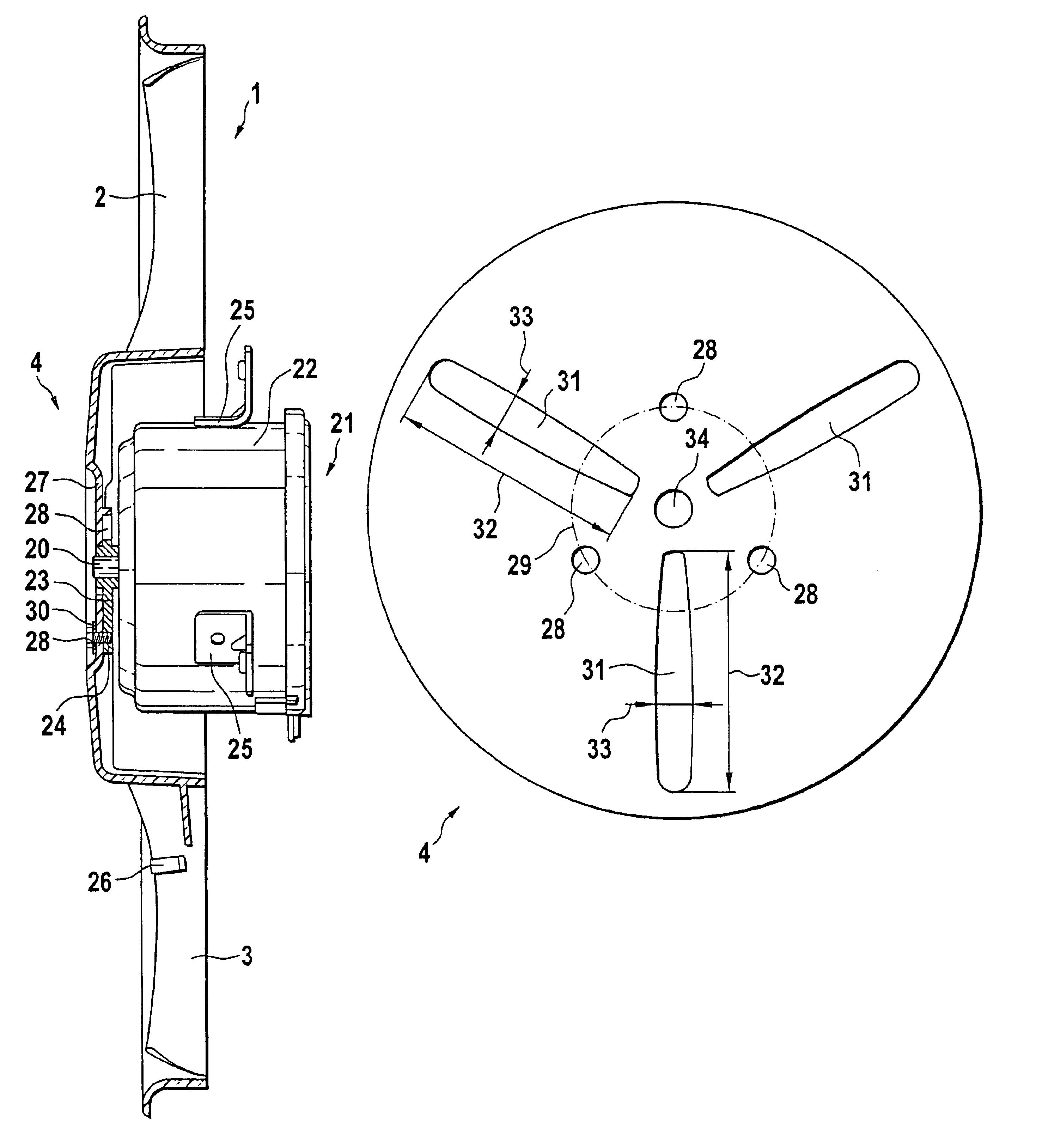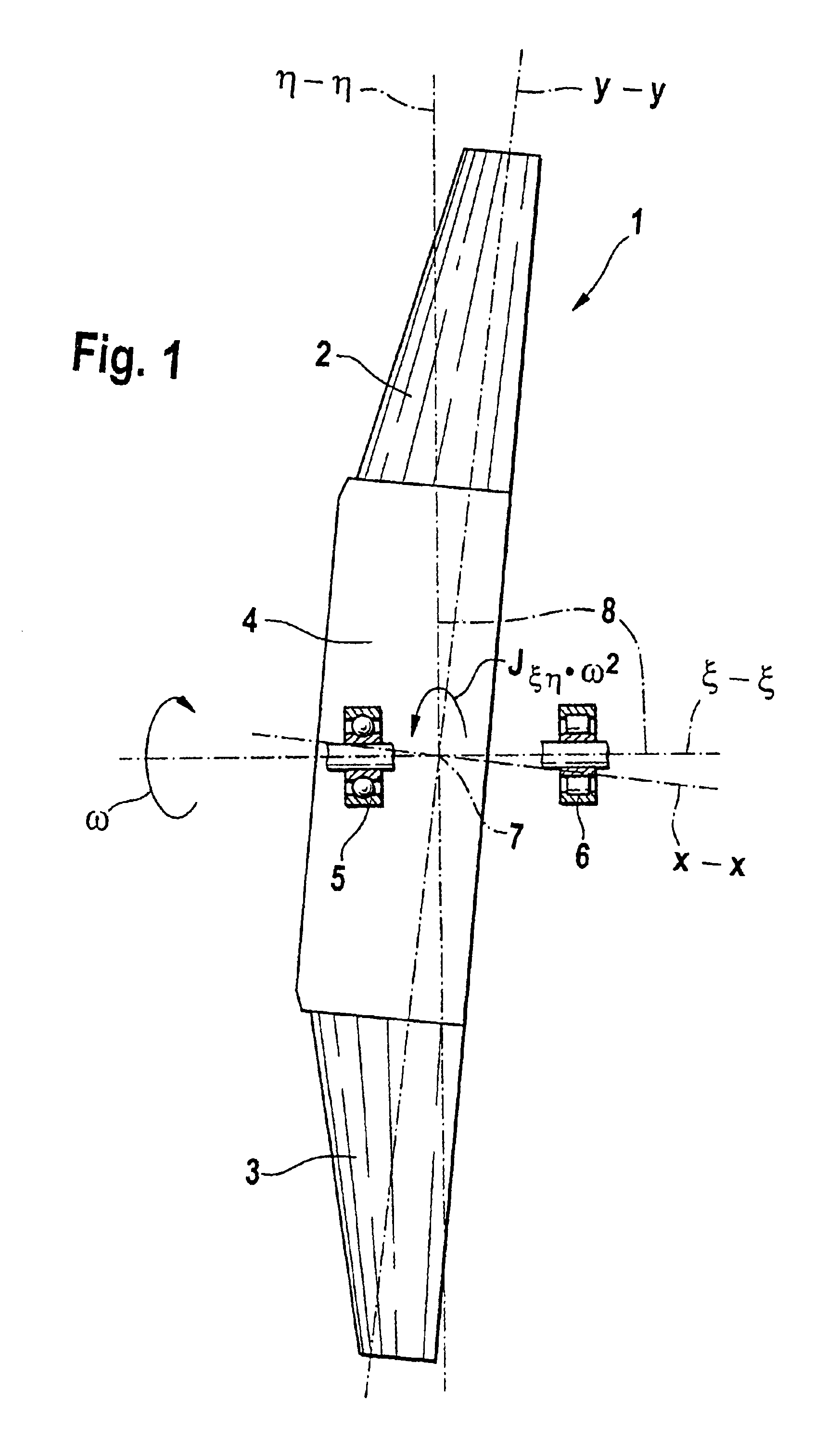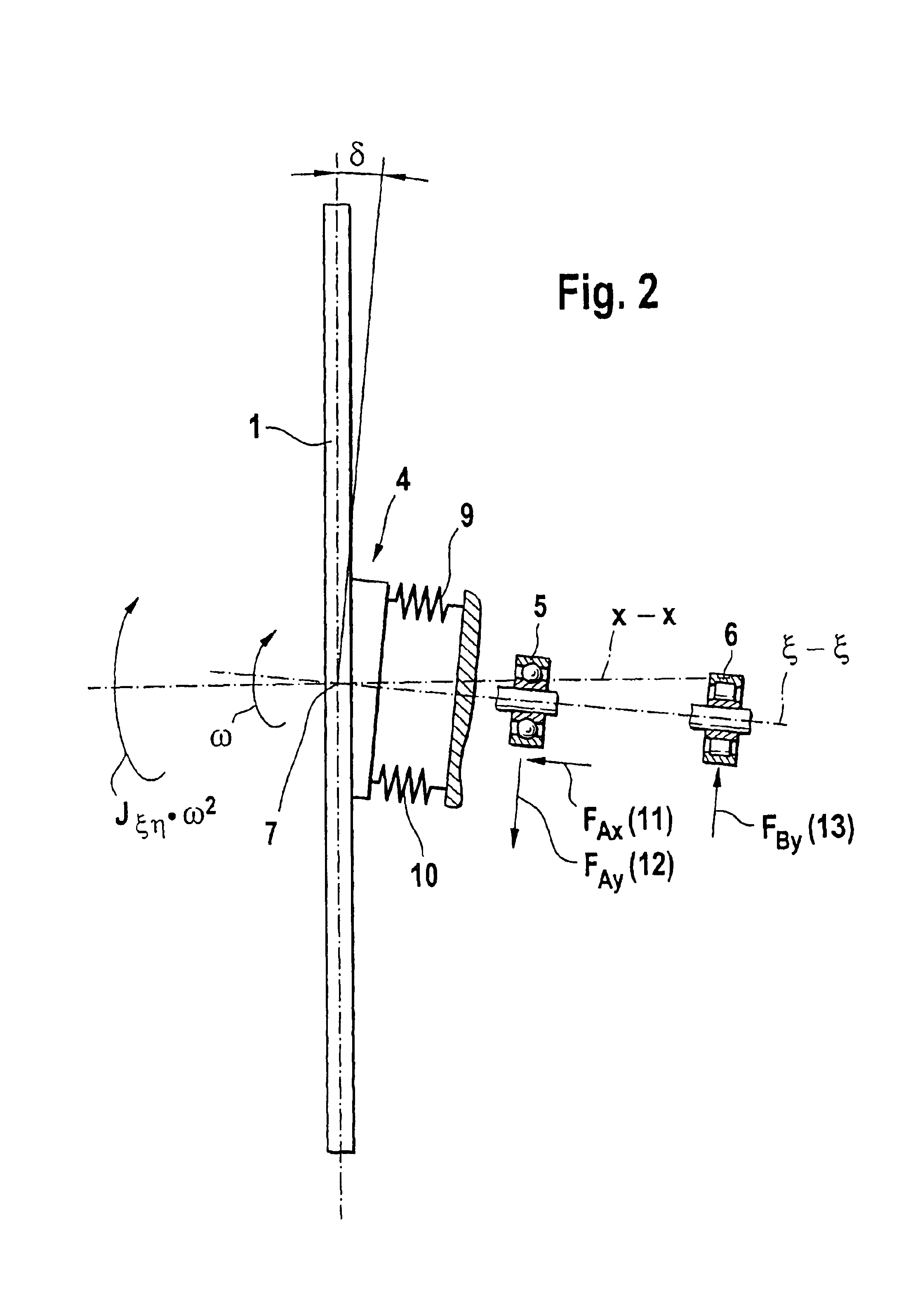Fan attachment with dynamic out-of-balance equalization
a technology of dynamic out-of-balance equalization and fan attachment, which is applied in the direction of rotors, marine propulsion, and vessel construction, etc., can solve the problems of non-defined dynamic imbalance, inability to securely attach the correction masses required, and inability to compensate dynamic imbalance (couple imbalance) of engine cooling fans, etc., to achieve simple fashion, increase flexural softness, and save energy
- Summary
- Abstract
- Description
- Claims
- Application Information
AI Technical Summary
Benefits of technology
Problems solved by technology
Method used
Image
Examples
Embodiment Construction
[0018]FIG. 1 shows an axial fan wheel, the main axis of inertia of which is tilted relative to the rotation axis.
[0019]An axial fan wheel 1 comprises fan blades 2 and 3 essentially situated on its outer circumferential region, which said fan blades are mounted on the circumference of a hub region 4. An axial fan wheel 1 according to the depiction in FIG. 1 is preferably manufactured as a plastic injection-molded part. An axial fan wheel of this type is supported on an armature or rotor shaft of an electrical drive not shown in FIG. 1, and it is set in rotation via the electrical drive. The axial fan wheel 1 has a main axis of inertia labelled “x—x” in the depiction according to FIG. 1. Another axis of inertia, labelled “y—y”, extends at a right angle to said main axis of inertia.
[0020]A rotation axis coordinate system 8, characterized by the rotation axis ξ—ξ and the axis η—η extending at a right angle thereto, is displaced relative to the aforementioned axes of inertia x—x and y—y....
PUM
 Login to View More
Login to View More Abstract
Description
Claims
Application Information
 Login to View More
Login to View More - R&D
- Intellectual Property
- Life Sciences
- Materials
- Tech Scout
- Unparalleled Data Quality
- Higher Quality Content
- 60% Fewer Hallucinations
Browse by: Latest US Patents, China's latest patents, Technical Efficacy Thesaurus, Application Domain, Technology Topic, Popular Technical Reports.
© 2025 PatSnap. All rights reserved.Legal|Privacy policy|Modern Slavery Act Transparency Statement|Sitemap|About US| Contact US: help@patsnap.com



